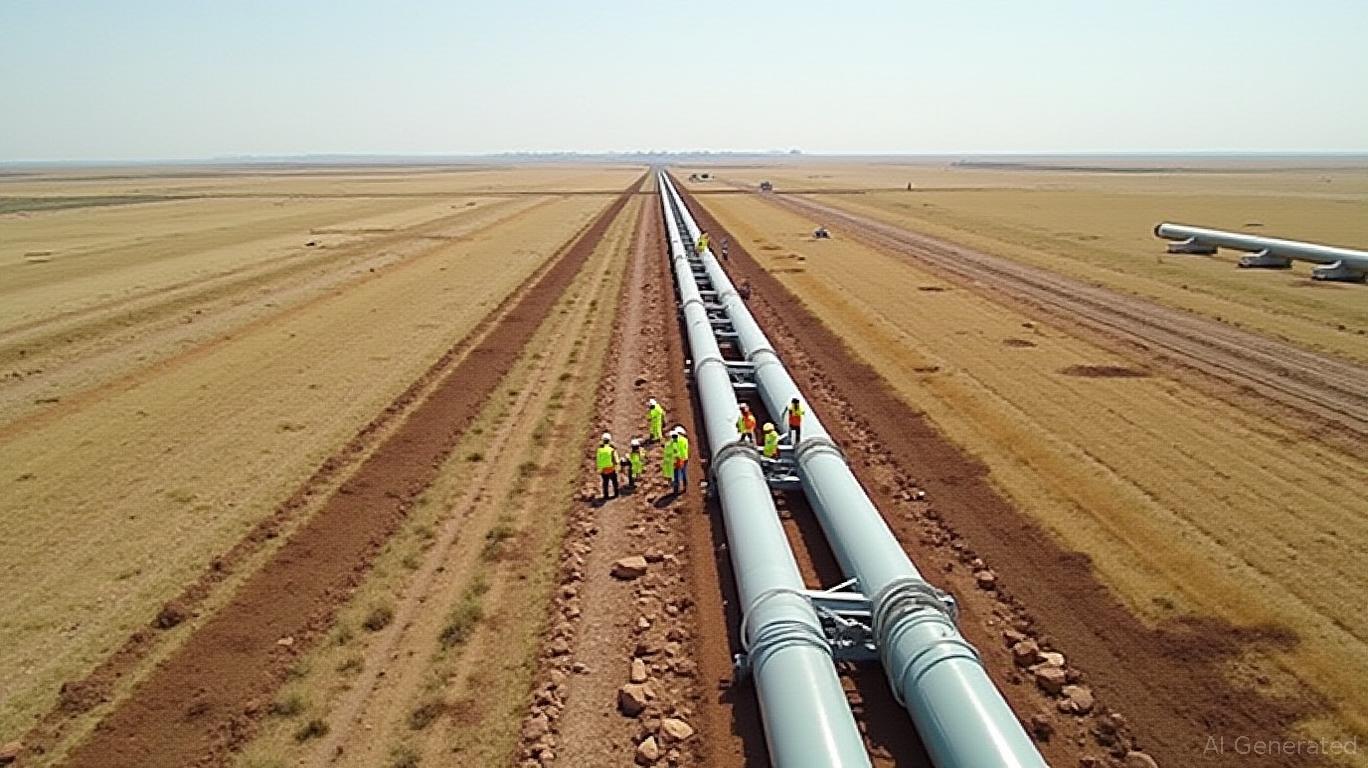Yangarra Resources: A Hidden Gem in a Declining Market
The oil and gas sector has faced relentless headwinds in 2025, with commodity price volatility, production cuts, and cost pressures casting a shadow over even the strongest players. Yet, amid this turbulence, Yangarra Resources (YGR) has quietly positioned itself as a candidate for contrarian investors seeking resilience in undervalued opportunities. While its Q1 2025 results show declines in key metrics, a deeper dive reveals a company prioritizing long-term asset optimization over short-term gains. Here's why the near-term struggles mask a compelling investment thesis.
The Numbers: A Mixed Bag, But Fundamentally Sound
Yangarra's Q1 2025 financials reflect industry-wide challenges. Funds flow from operations fell 18% to $20 million, while adjusted EBITDA dropped 19% to $21.3 million. Net income also declined sharply, down 40% to $5.4 million. Production volumes dipped 8% year-over-year to 10,330 boe/d, driven by reduced drilling activity and strategic well optimization. For income-driven investors, these figures may raise red flags. But dig deeper, and a more nuanced story emerges.
First, adjusted net debt improved to $101.1 million—a $2.1 million reduction from the prior quarter—and the company's adjusted net debt to funds flow ratio of 1.27:1 remains enviable in an industry where leverage ratios often exceed 3:1. This metric underscores Yangarra's financial flexibility, supported by a $130 million credit facility that's only 78% utilized. With a 69% operating margin—the highest in five years—Yangarra is proving it can generate robust returns even amid softer commodity prices.

Operational Efficiency: The Quiet Engine of Resilience
While production volumes have declined, Yangarra's focus on cost discipline and asset quality is bearing fruit. All-in cash costs fell to $15.30/boe, a 7% improvement from Q1 2024, driven by lower transportation expenses ($3.21/boe) and tight control over G&A costs ($1.32/boe). This efficiency is critical in an environment where natural gas prices have surged to $2.28/mcf (up 38% from Q4 2024), creating tailwinds for margin expansion.
The company's infrastructure investments also deserve scrutiny. The 6.7 km pipeline project, completed in Q1, now connects south Chambers to Yangarra's 100%-owned facility, enhancing operational synergies and reducing reliance on third-party infrastructure. The strategic bore under the North Saskatchewan River—a cost-effective feat managed internally by Yangarra's OFS group—exemplifies the company's ability to execute capital-light, high-impact projects. Perhaps most promising is the newly acquired shallow-cut facility, which provides a backup during third-party turnarounds. This infrastructure redundancy is a rare competitive advantage in a sector prone to supply-chain disruptions.
Production Outlook: Shut-Ins Today, Gains Tomorrow
The temporary shutdown of four DUCs to test a new completions technique has drawn scrutiny, but this pause is tactical, not desperate. By delaying production from these wells until early May, Yangarra is prioritizing long-term performance over short-term output. If successful, this technique could boost well productivity and extend the life of existing assets—a win for both production stability and reserves replacement.
Meanwhile, the restart of an optimization program in February, timed to rising gas prices, suggests management is agile in capitalizing on market shifts. With NGL pricing up 28% year-over-year and gas prices stabilizing, Yangarra's asset base—weighted 41% toward liquids—positions it to benefit disproportionately from a commodities rebound.
Valuation: A Discounted Entry Point for Patient Investors
At current levels, Yangarra's stock trades at a 5-year low relative to its funds flow and production metrics. The company's operating netback of $25.36/boe remains robust, yet its share price has yet to reflect the margin strength or infrastructure advantages outlined above.
Consider this: even with Q1's 18% funds flow decline, Yangarra's adjusted net debt is still comfortably covered by its operating cash flows. Meanwhile, the company's retained earnings have surged to $343.3 million, and shareholders' equity grew to $576 million—indicators of a financially healthy balance sheet capable of weathering cyclical downturns.
The Contrarian Play: Why Now is the Time to Buy
Critics will point to the 40% drop in net income and the 8% production decline as reasons to avoid YGR. But these metrics miss the bigger picture:
- Leverage discipline: A net debt-to-funds flow ratio below 1.5 is rare in a sector where debt ratios often exceed 2.0.
- Cost leadership: All-in costs are among the lowest in the peer group, with room to improve further as gas prices stabilize.
- Strategic assets: The Chambers pipeline and shallow-cut facility create a moat against infrastructure bottlenecks.
- Execution track record: Yangarra's ability to complete projects internally (e.g., the river bore) reduces costs and timelines.
The upcoming Annual General Meeting (AGM) on May 1, 2025, offers a catalyst for renewed investor confidence. With shares trading at a discount to tangible book value and a dividend yield of 4.2% (based on Q1's cash flow), YGR presents a rare opportunity to buy a financially strong operator at a bargain price.
Conclusion: A Catalyst for Long-Term Gains
Yangarra Resources is not immune to the oil and gas sector's cyclical pain, but its disciplined capital allocation, infrastructure investments, and cost efficiency position it to outperform once commodity prices stabilize. The Q1 declines are a temporary hurdle, not a terminal verdict. For investors willing to look past the noise, YGR offers a compelling entry point into a company primed to capitalize on its own strategic bets—and the eventual rebound of energy markets.
Act now before the market catches on.
This article is for informational purposes only and should not be considered financial advice. Always conduct your own research or consult a financial advisor before making investment decisions.

Comments
No comments yet